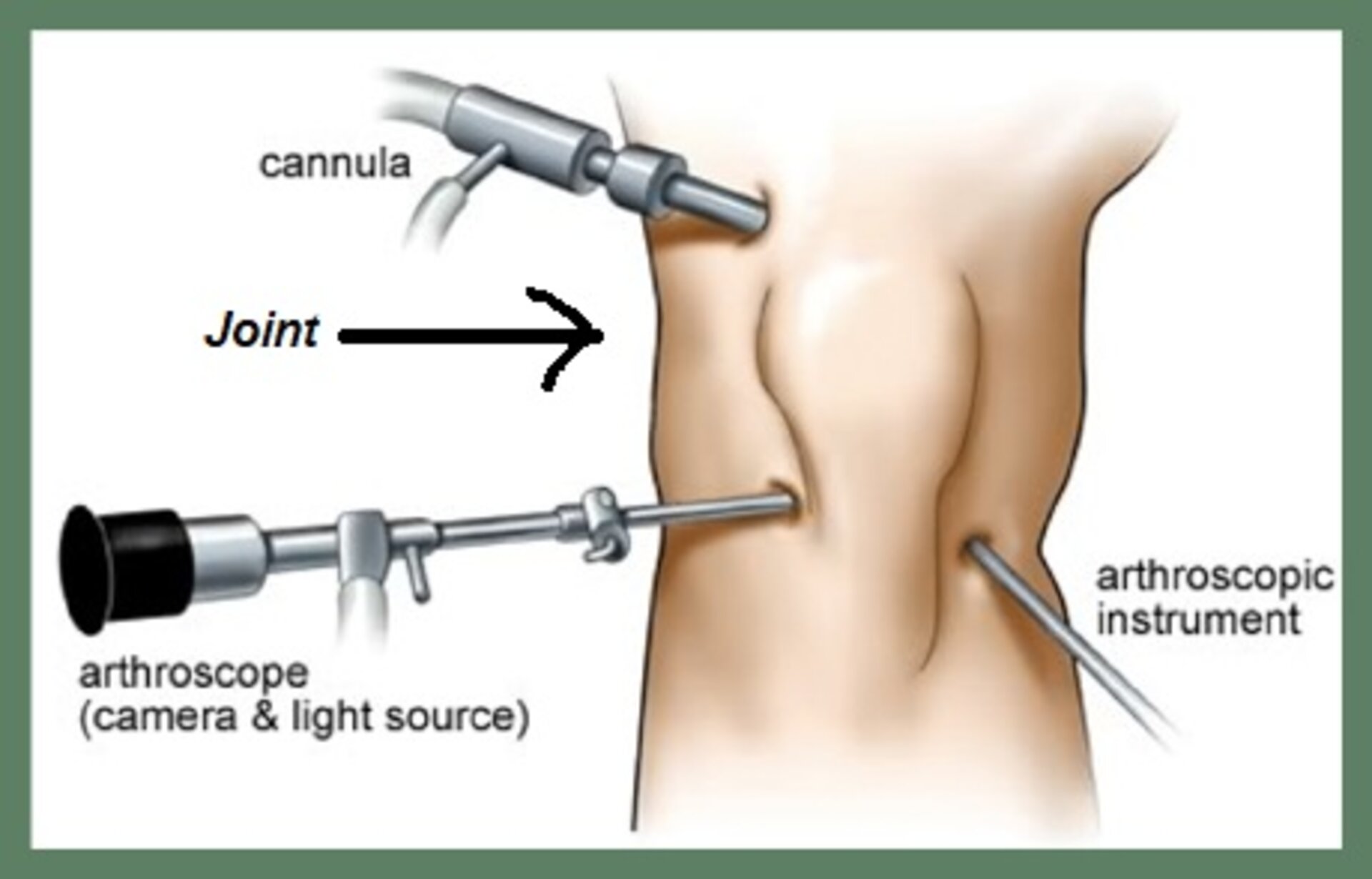Arthroscopy in Nagpur | Dr. Unmesh Mahajan
Arthroscopy of the Knee Joint
The arthroscope is a fiber-optic telescope that can be inserted into a joint (commonly the knee, shoulder and ankle) to evaluate and treat a number of conditions. A camera is attached to the arthroscope and the picture is visualized on a TV monitor. Most arthroscopic surgery is performed as day surgery and is usually done under general anesthesia. Knee arthroscopy is common, and millions of procedures are performed each year around the world.
Arthroscopy is useful in evaluating and treating the following conditions

The arthroscope is a fiber-optic telescope that can be inserted into a joint (commonly the knee, shoulder and ankle) to evaluate and treat a number of conditions. A camera is attached to the arthroscope and the picture is visualized on a TV monitor. Most arthroscopic surgery is performed as day surgery and is usually done under general anesthesia. Knee arthroscopy is common, and millions of procedures are performed each year around the world.
Arthroscopy is useful in evaluating and treating the following conditions
- Torn floating cartilage (meniscus): The cartilage is trimmed to a stable rim or occasionally repaired
- Torn surface (articular) cartilage
- Removal of loose bodies (cartilage or bone that has broken off) and cysts
- Reconstruction of the Anterior Cruciate ligament
- Patello-femoral (knee-cap) disorders
- Washout of infected knees
- General diagnostic purposes

Arthroscopy of the Knee: Patient Information
Please stop taking Aspirin and Anti-inflammatory medications 5 days prior to your surgery. You can continue taking all your other routine medication. If you smoke you are advised to stop a few days prior to your surgery.
You will be admitted on the day of surgery and need to remain fasted for 6 hours prior to the procedure.
The limb undergoing the procedure will be marked and identified prior to the anesthetic being administered.
Once you are under anesthetic, the knee is prepared in a sterile fashion. A tourniquet is placed around the thigh to allow a ‘blood – free' procedure.
The Arthroscope is introduced through a small (size of a pen) incision on the outer side of the knee. A second incision on the inner side of the knee is made to introduce the instruments that allow examination of the joint and treatment of the problem.
Post-operative Recovery
Post-operative Recovery
- You will be taken to your room
- A bandage will be around the operated knee.
- Once you are recovered your IV will be removed and you will be shown a few exercises to do.
- Your Surgeon will see you prior to discharge and explain the findings of the operation and what was done during surgery.
- Pain medication will be provided and should be taken as directed
- You can remove the bandage in 24 hours and place waterproof dressings (provided) over the wounds.
- It is NORMAL for the knee to swell after the surgery. Elevating the leg when you are seated and placing ice packs on the knee will help to reduce swelling. (Ice packs on for 20 min 3-4 times a day until swelling has reduced)
- You are able t return to work when comfortable unless otherwise instructed.
- Appointment given 7-10 days after surgery to monitor your progress and remove the 2 stitches in your knee at 15 day post operative.